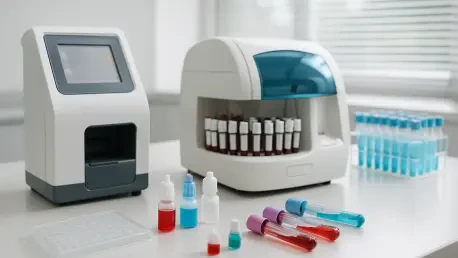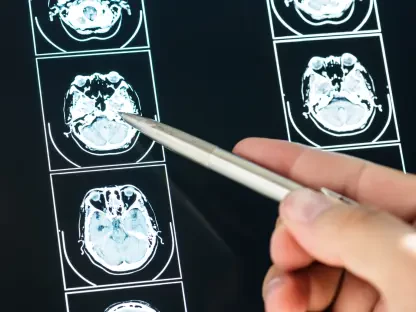In an era where healthcare precision is paramount, the global market for in vitro diagnostics (IVD) quality control is experiencing remarkable growth, driven by an urgent need for accurate and reliable diagnostic testing. With chronic and infectious diseases on the rise, alongside rapid advancements in diagnostic technologies, the demand for robust quality control systems has never been more critical. Valued at hundreds of millions today, this market is projected to grow significantly with a compound annual growth rate (CAGR) of 6.66% from 2025 to 2031. This surge reflects a broader trend in healthcare toward ensuring patient safety and diagnostic precision, as hospitals and laboratories worldwide strive to meet stringent standards. The convergence of technological innovation, regulatory pressures, and expanding healthcare infrastructure paints a dynamic picture of an industry poised for transformation, addressing both opportunities and challenges in equal measure.
Driving Forces Behind Market Expansion
Rising Disease Prevalence and Diagnostic Demand
The escalating burden of chronic and infectious diseases, such as diabetes, cardiovascular issues, and cancer, is a key catalyst propelling the IVD quality control market forward. As global populations grapple with these health challenges, the need for precise diagnostic testing has surged, pushing healthcare facilities to prioritize accuracy in results. This demand is further intensified by the lingering impact of pandemics and outbreaks, which have underscored the importance of reliable diagnostics for timely intervention. Laboratories and hospitals are increasingly investing in advanced quality control systems to minimize errors and enhance patient outcomes. These systems play a vital role in validating test results, ensuring that diagnoses are both trustworthy and actionable, which is essential in managing widespread health crises effectively. The focus on patient safety through accurate diagnostics has become a cornerstone of modern healthcare strategies, driving sustained market growth across diverse regions.
Beyond the immediate need driven by disease prevalence, the adoption of point-of-care (POC) testing has added a new dimension to this market’s expansion. POC testing, often conducted in non-traditional settings like clinics or even homes, requires rigorous quality control to maintain consistency outside controlled lab environments. Similarly, the rise of molecular diagnostics, critical for early disease detection and personalized medicine, demands stringent oversight to ensure precision. These emerging diagnostic approaches highlight the necessity for adaptable and robust quality control solutions that can keep pace with evolving healthcare delivery models. As these methods become more mainstream, the market for IVD quality control systems is expected to see continued upward momentum, fueled by the need to support innovative testing formats while adhering to high standards of accuracy and reliability.
Technological Innovations Fueling Growth
Technological advancements are reshaping the landscape of IVD quality control, with automation and digital platforms leading the charge in enhancing diagnostic efficiency. The integration of next-generation assays into routine testing processes has not only improved accuracy but also increased the complexity of maintaining consistent performance. These innovations, while transformative, necessitate sophisticated quality control measures to ensure that automated systems and digital tools deliver reliable results. Regulatory bodies like the FDA and WHO have set rigorous standards that manufacturers and healthcare providers must meet, further emphasizing the importance of quality control in adopting cutting-edge technologies. This dynamic interplay between innovation and regulation is a significant driver, as it pushes the industry to continuously refine systems to match technological progress with compliance needs.
Moreover, the push toward precision in diagnostics has accelerated the development of tailored quality control solutions that address specific technological challenges. For instance, automated systems reduce human error but require regular calibration and validation to function optimally, a process heavily reliant on advanced control mechanisms. Digital platforms, meanwhile, offer real-time monitoring and data analysis, but their effectiveness hinges on the integrity of the underlying diagnostic processes. The market’s response to these needs has been a proliferation of specialized tools designed to support the latest diagnostic technologies while ensuring adherence to global standards. This trend of aligning quality control with technological evolution is expected to sustain market growth, as healthcare providers seek to balance innovation with the imperative of delivering accurate, dependable results to patients worldwide.
Challenges and Future Considerations
Barriers to Market Penetration
Despite its promising trajectory, the IVD quality control market faces significant hurdles that could impede its growth in certain regions. High costs associated with advanced systems remain a formidable barrier, particularly in price-sensitive markets where healthcare budgets are constrained. These expenses often limit the adoption of cutting-edge quality control solutions, leaving some facilities reliant on outdated methods that may compromise diagnostic accuracy. Additionally, the complexity of regulatory frameworks poses a challenge, as navigating diverse and stringent requirements can delay implementation and increase operational costs. Addressing these financial and procedural obstacles is crucial for expanding market access, especially in developing regions where the need for reliable diagnostics is often most acute, yet resources are limited.
Another critical challenge lies in the shortage of skilled professionals capable of operating and maintaining sophisticated IVD quality control systems. The technical expertise required to manage these tools is not always readily available, particularly in under-resourced areas, leading to potential gaps in system efficacy. This skills deficit underscores the need for comprehensive training programs and capacity-building initiatives to ensure that healthcare workers are equipped to handle advanced technologies. Simplifying regulatory processes could also facilitate quicker adoption, while cost-effective solutions tailored to regional economic realities would help bridge the accessibility gap. Overcoming these barriers demands a concerted effort from industry stakeholders to prioritize affordability and education, ensuring that the benefits of quality control advancements reach a broader global audience.
Strategies for Sustained Progress
Looking back, the journey of the IVD quality control market reveals a landscape shaped by both innovation and persistent challenges. The industry navigated high system costs by exploring scalable solutions, while the skills shortage prompted targeted training initiatives that empowered healthcare professionals. Streamlined regulatory approaches emerged as a response to complex compliance demands, fostering quicker integration of quality control systems into diverse markets. These efforts laid a foundation for future growth, demonstrating resilience in addressing systemic barriers.
Reflecting on past dynamics, the path forward hinges on collaborative strategies that prioritize accessibility and expertise. Industry leaders should focus on developing affordable quality control tools without sacrificing precision, potentially through modular systems adaptable to varying budget constraints. Partnerships with educational institutions could further address skill gaps by embedding specialized training into medical curricula. Additionally, advocating for harmonized global regulations might reduce compliance burdens, enabling faster deployment of life-saving diagnostic technologies. These actionable steps, rooted in lessons from previous challenges, offer a blueprint for ensuring that the benefits of IVD quality control reach every corner of the globe.









